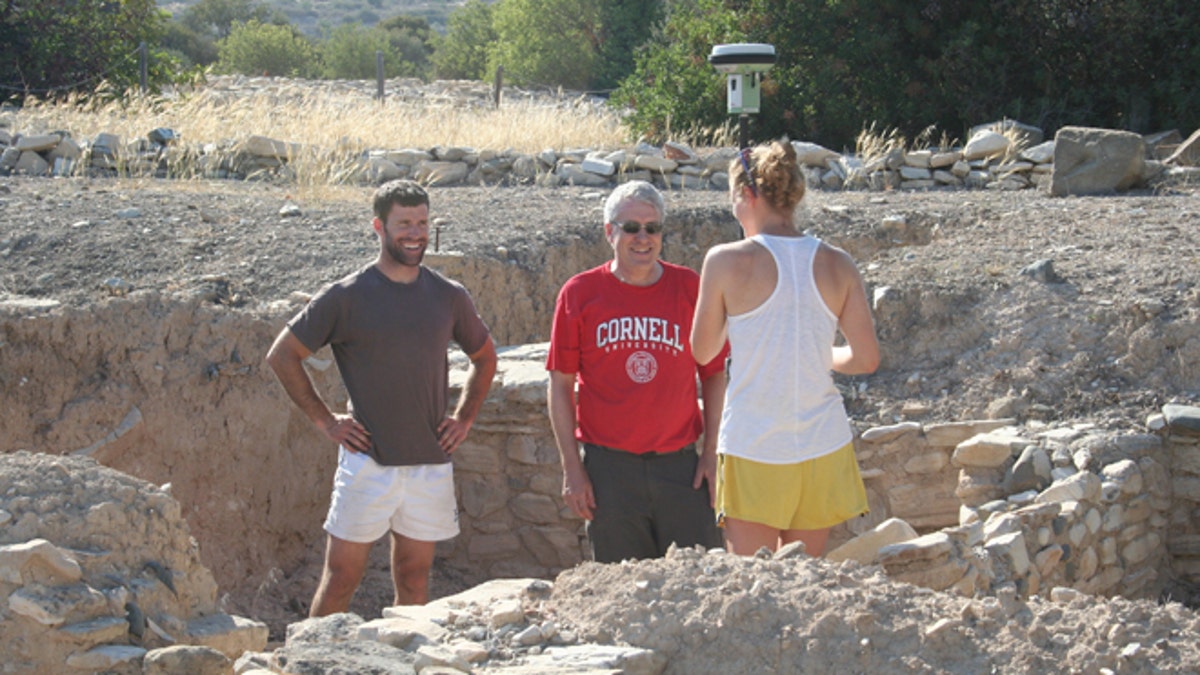
Cornell professor Sturt Manning (Cornell University)
The year 1776 saw both the U.S. Declaration of Independence and publication of Gibbon’s "The History of the Decline and Fall of the Roman Empire."
Today the United States stands on the top of the podium of world powers: however, does a Roman fate await? A visit to the dramatic Pueblo ruins in the American southwest, former home to a complex civilization that abandoned its settlements in the 12th-13th centuries A.D., warns us that circumstances can change, and dramatically.
Archeology offers an education in patterns, possibilities and challenges that the U.S. should value and exploit for its future.
[pullquote]
For the U.S., in particular, our past is a global one: its population has come from all over the world, from the first migrants more than 12-13,000 years ago, to European settlers, to African slaves, to later waves through the present day. Most of the evidence for this long, complex past comes from archaeology.
China invests heavily on research and preservation of its archaeology and history -- sometimes even controversially, such as its massive spending on maritime archaeology as part of the assertion of Chinese control of the South China Sea.
In contrast, the U.S. spends a tiny fraction of the money that China, or Europe, invests in archaeological research and preservation. Moreover, the U.S. Congress is considering legislation – the FIRST Act – that would devastate the already limited support the National Science Foundation (NSF) provides toward the U.S. archaeological effort.
In recent years, the NSF has awarded $7 to 8 million a year toward archaeology and archaeological science projects – amounts dwarfed by Chinese or European funding. To quantify: a major NSF archaeology award is typically less than ten percent the size of the equivalent European grant.
Should we worry? Yes.
A detailed understanding of when and what happened to the Pueblo peoples came from archaeology – especially analysis of the wood remains. The civilization prospered in an unusually wet period, and collapsed with a shift to more arid conditions thereafter.
Water is critical to life, and is an increasingly challenged resource in several large areas of the U.S. Archaeology and history from around the world inform us about how human societies can succeed or fail against drought. For example, studying the east Mediterranean and Near East, we see evidence of major arid phases 1200-1000 BC and 2200-2000 BC.
In each case, various states and empires decline or collapse, but other sites and polities survive or change. How? Why?
In southeast Asia, a combination of two long severe droughts, punctuated by a period of intense monsoons which damaged water management systems, seem to have undermined the five century old Khmer civilization centered at Angkor Wat, contributing to its demise in the early 15th century A.D. We know this through a combination of archaeology and the study of tree-ring records.
There are important lessons to be learned for our own water-challenged times. Even more remarkable are the Nabataeans. Their major city, Petra in southern Jordan, represents a very special desert adaptation some 2000 years ago. Through use of brilliant water technology (an elaborate system of collection areas, channels, check dams, and cisterns) – an entire city managed to thrive in an otherwise inhospitable hyper-arid environment.
Some large U.S. cities currently rely on declining aquifers: they need new long-term strategies to survive, and we have much to learn from those civilizations that came before us.
Different types of urban settlements have been tried all over the world over several thousands of years in varying conditions. Archeology teaches us what worked, what failed, and why.
As our climate changes, what crops might feed us? Today our large-scale agriculture exploits only a very few main crop types, but it turns out our ancestors tried a number of other types of plant resources in differing circumstances, and some of these deserve renewed attention as future resources.
To investigate and understand all the many experiments and lessons of the past we need archaeological research, and increasingly archaeological science techniques.
The U.S. should be investing in and increasing, not cutting, the very modest support it currently puts into archaeology via the National Science Foundation.
